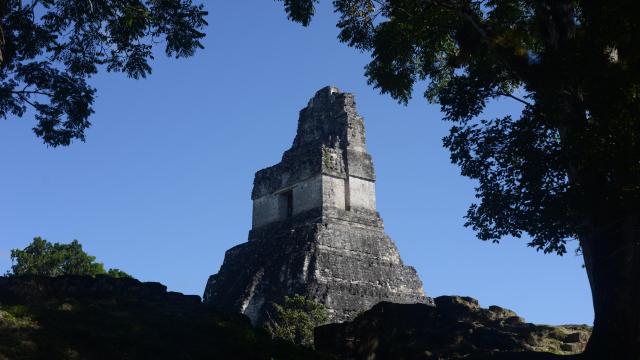Ancient Maya cities like Tikal and Cerén were heavily polluted with mercury, according to recent analysis of soil from the sites. Exposure to the element may have been a health hazard for the Maya and could be a risk to archaeologists today, according to the team that studied the samples.
The mercury likely seeped into the soil after being used for quotidian purposes, like painting houses and ceramics. The review of the mercury concentrations across the settlements is published in Frontiers in Environmental Science.
Cinnabar wasn’t used exclusively by the Maya. Recent analysis of the paint on a 1,000-year-old golden burial mask of the Sicán people found evidence of the reddish substance, along with blood. Both had symbolic importance for Mesoamerican cultures like the Sicán and the Maya. And thousands of years before the Maya and Sicán, the Neolithic residents of Çatalhöyük in Turkey used cinnabar as a pigment in burials.
According to study co-author Nicholas Dunning, a geoarchaeologist at the University of Cincinnati, the Maya considered cinnabar to contain ch’ulel — soul force — making it a sacred substance regularly used in decorative contexts.
The Maya would use cinnabar as a paint and a powder on walls and pottery. Then, the cinnabar leached mercury into the local soil and water.
“At this point, biological archaeologists have not looked for Hg in the skeletal remains found in Maya burials so it is impossible to say if contamination will show up in such investigations,” Dunning said in an email to Gizmodo. “One complication that will hinder such research is that many royal and other elite burials included cinnabar powder, which was liberally sprinkled over the skeletons and might leach into those bones.”
In earlier research, a team that included Dunning found mercury in the ancient drinking water reservoirs of Tikal. The new work expands on those findings by measuring the presence of mercury on Maya sites in Guatemala, Belize, El Salvador, Honduras, and Mexico.
“Discovering mercury buried deep in soils and sediments in ancient Maya cities is difficult to explain, until we begin to consider the archaeology of the region which tells us that the Maya were using mercury for centuries,” said Duncan Cook, a geographer at the Australian Catholic University and a co-author of the paper, in a Frontiers release.
How the Maya got the cinnabar is unclear. Most Maya sites are far from geological mercury sources, so the element may have gotten into Maya hands via the trade routes that stretched across Mesoamerica.
Mercury concentrations were highest at Tikal, a large Maya site in Guatemala, according to the team’s analysis. There, some soils had mercury concentrations of 17.16 parts per million (Frontiers noted that sediment mercury has a toxic effect on humans at 1 part per million).
The researchers suggested that future archaeological projects consider more protection on dig sites known to have high concentrations of mercury. Investigating how the Maya got their toxic decorations is important, but the health of archaeologists shouldn’t be compromised to make it happen.
More: 1,000-Year-Old Gold Mask Found in Tomb Was Painted With Human Blood
